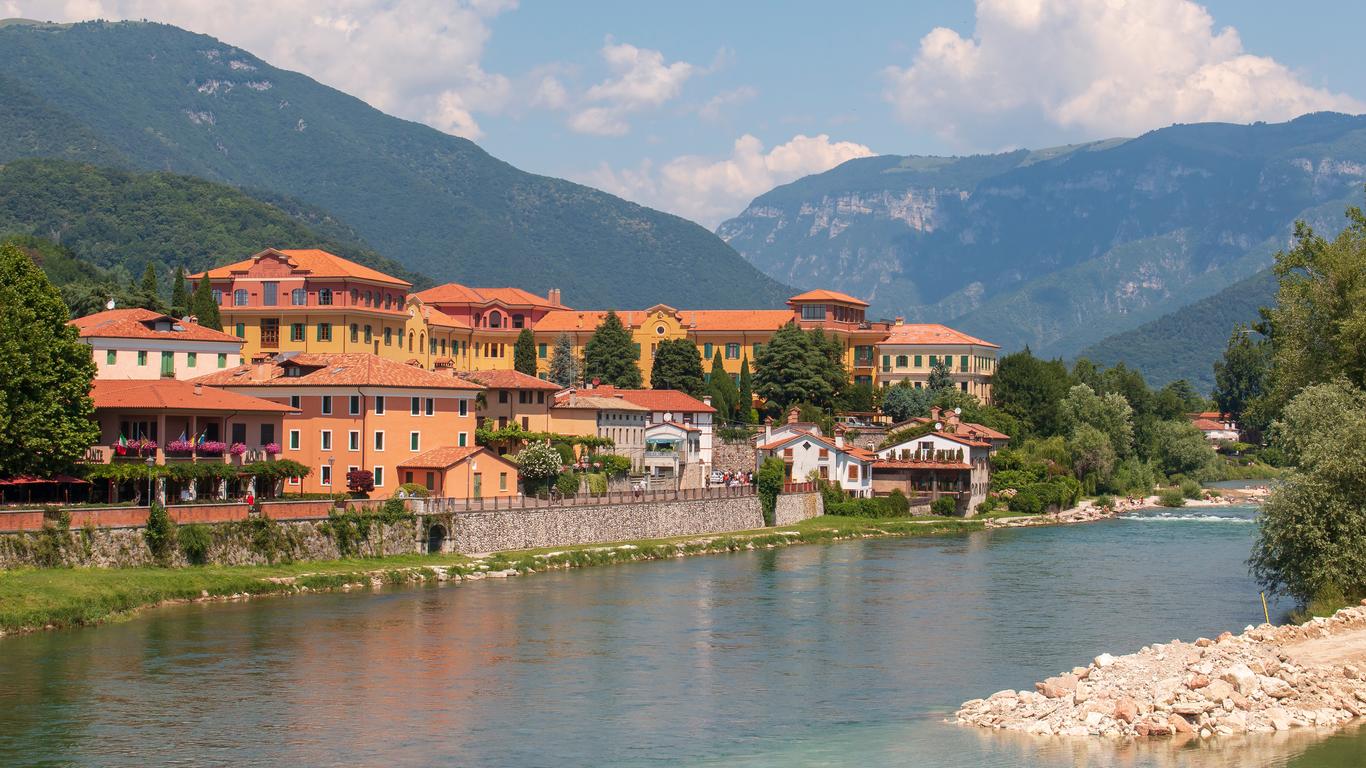Located halfway between Verona and Venice, Vicenza straddles the Bacchiglione River at the base of Monte Berico. Many of its elegant palazzi and villas were designed by the Italian Renaissance architect Andrea Palladio and are collectively designated as a UNESCO World Heritage Site. Modern-day Vicenza is a cosmopolitan city that has thrived on the back of the textile and steel manufacturing industries.
Things to do in Vicenza
Dominating the Piazza dei Signori is the Basilica Palladiana, which was designed by Andrea Palladio in the late 16th century. Marvel at its open colonnades and wooden vaulted roof, then explore the models and designs of Palladio on display in the Museo Palladiano. Palladio also envisioned the Palazzo Chiericati, which now houses an art gallery.
One of Vicenza’s most important architectural landmarks is the Teatro Olimpico, a wood and stucco theatre that was begun by Palladio and completed by Vincenzo Scamozzi. It houses the oldest surviving stage set in the world, which was installed for the first performance here in 1585. The Teatro Olimpico stands opposite the Museo di Santa Corona, where you’ll find natural history and archaeological exhibits.
On the southern edge of Vicenza is the Villa La Rotonda, a Renaissance country house that was inspired by the Pantheon in Rome. It features four identical facades and is crowned by a dome, with magnificent frescoes decorating its interior walls. From the porticos of the Villa La Rotonda, there are sweeping views of the surrounding countryside.
Getting around Vicenza
Vicenza is just under an hour’s drive from Venice and Marco Polo Airport, which has flights to destinations across the globe. Regular trains connect from Milan to the Vicenza railway station while buses travel throughout the city. The centre of Vicenza can easily be explored on foot.





